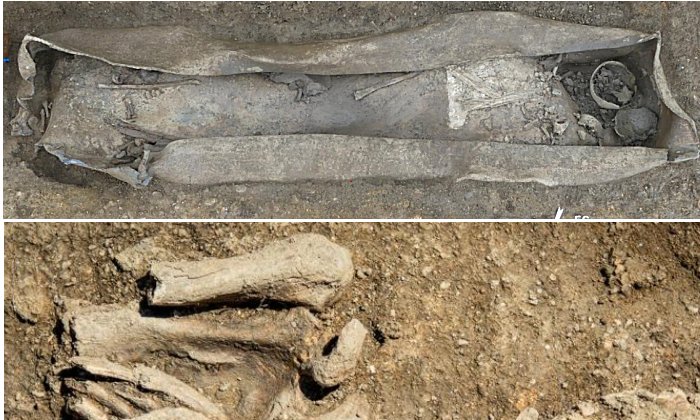Ancient Necropolis With Lead Coffins Sheds Light On Early Christian Funeral Practices
Excavation is currently being carried out by a team of Inrap archeologists in Autun – the Ancient Augustodunum – in collaboration with the Archaeological Service of the city of Autun.
The excavation concerns a necropolis located near the early Christian church of Saint-Pierre-l’Estrier.
In use from the middle of the 3rd century to the 5th century, this necropolis was remembered for a long time because several mausoleums were still visible in the 18th century.
Some of these imposing funerary monuments contained marble sarcophagi. One of them would have sheltered the remains of Amator, sometimes cited as the first bishop of Autun.
One of the first mausoleums, the founding tomb of St Peter’s Church, was built on a Gallo-Roman villa and is said to have housed the remains of a locally revered personality.

The necropolis housed some of the oldest Christian burials in the northern half of Gaul.
The inscription of Pektorios, dating from the 4th century, which contains one of the first references to Christ in Gaul, was found here.


The dig has revealed nearly 150 burials to date. Some individuals are buried in sandstone sarcophagi while others are placed in coffins.
The coffins are usually made of wood or lead. Some of the deceased are buried in tile caskets that recall the funerary practices of the late Roman Empire. Few objects are associated with the deceased in the burials, a fact consistent with late Antiquity funerary practices.
Archaeologists have also found traces of six mausoleums and a wooden building.

Lead coffins are rare in the northern half of France. Autun is one of the most important deposits, with about forty known specimens, including eight from the current excavation.
They are generally anepigraphic and without decoration. However, some of them bear cruciform signs that are difficult to interpret.

Placed in a stone sarcophagus, one of them seems to have been airtight for more than 1500 years. Its opening is planned at the end of the excavation and could reveal a well-preserved individual, perhaps with his clothes and other rare or ephemeral elements accompanying him into the afterlife.
